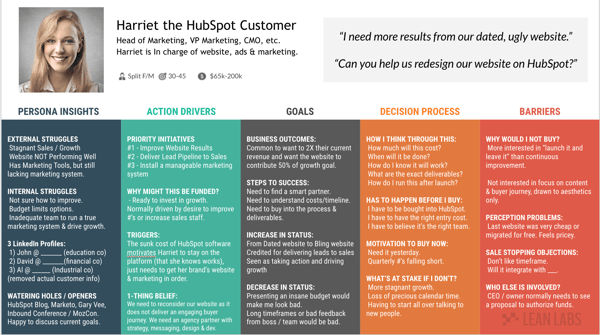Let me ask you something. Who's your celebrity crush?
Whenever I meet someone new, I ask them that question. It sounds silly, but it's a great icebreaker. The answers are always interesting, and I feel like I know the person better after asking.
I try to do the same whenever I write an introduction. I pose a question or idea that catches the reader off guard and gets them thinking.
Take this post. Here we are writing a blog post about introductions, and I'm asking you about a celebrity crush. You might think it doesn't connect, but if you're still reading this, it worked.
When it comes to blog intros, there are a lot of things you can try to keep it interesting. Because if your blog introduction doesn't hook the reader, your blog post is never going to have high engagement.
website grader
Diagnose Your Growth Blockers & Unlock Your Brand’s Potential
Enter your website URL and get a tailored marketing roadmap that reveals untapped opportunities to boost traffic, eliminate roadblocks, and fuel sustainable growth.
- Identify growth roadblocks on your website
- Pinpoint opportunities you can leverage to grow your brand
- Boost traffic with personalized strategies
Thanks for submitting the form!
How To Write A Good Introduction For A B2B Blog Post
There are so many ways to begin an introduction.
You can share a statistic.
You can write something shocking or controversial.
You can lead into it with a quote.
But you don't have to.
There are a lot of formulas you can use to write an introduction, and sure, most of them will help you write something decent. But the most compelling blog introduction examples don't follow a robotic script.
Instead, they:
Address The Reader's Primary Beliefs Right Away
If I'm writing to change my reader's mind or sway their opinion, I leverage their beliefs or allegiances.
For instance, if I were writing about why I believe investing in organic marketing is better than investing in paid advertising, I'd start with:
Paid advertising can get you hundreds of leads.
It's true, and the reader already knows that. There's no point in arguing it. Instead, I can open with that statement and meet them where they're at. Then, I can discuss why getting hundreds of leads isn't always a good thing and why quality is more important than quantity.
I can admit that sometimes, paid advertising can be the temporary boost you need to fill your funnel initially. But in the long-term, organic marketing attracts higher quality leads.
The rest of the article can explain why.
Understand And Leverage Their Emotional State
When I'm having a hard time crafting an introduction, I go back to our one-page buyer persona template.
The template has a section that outlines their internal struggles, triggers, and perception problems, which are all useful in understanding the reader's emotional state.
This introduction approach is effective for how-to and explainer posts, especially when you're writing about something you know the reader has been struggling with.
Let's say it's about building a sales funnel.
You can begin by empathizing about how challenging it can be to nurture leads, talk about the difficulties of the tools or processes they've already used, and more.
Add A Compelling And Recent Stat
I know I called out sharing compelling statistics earlier, but I admit, it can be a great way to start an article. The only caveat is that the statistic needs to be relevant, recent, and from a fantastic source. Anything less than that will set your content up to fail from the very beginning.
For instance, imagine if you started an article with a stat from 2010. That was almost ten years ago! Alternatively, if you have a questionable source or take that statistic out of context, your reader won't trust you.
Admit Any Bias And Call Out Any BS
My least favorite introductions are the ones that plug products and services. Because when you open a blog post by pushing out your company and aggressively selling yourself, it's a fail.
If you're going to talk about yourself, at least admit your bias up front. For example, if I wrote about the best HubSpot growth agencies, I'd talk about how we're a growth agency. But I'd admit that we're not a fit for everyone, and then fairly assess other agencies alongside ourselves.
Introduce Conflict That Your Reader Is Going To Care About
A lot of people throw around the idea to "introduce conflict" to make introductions "more controversial."
I don't disagree. Conflict is an excellent way to spice up an introduction. But it's only a good approach if you can take a firm stance on something. You can't introduce conflict just for the heck of it.
For example, I recently wrote about how HubSpot was ditching the “sales funnel” model and transitioning to a “flywheel" model.
To introduce conflict, I just said what almost every marketer was thinking, but not saying: there was very little difference between the two models. I didn't say one was better than the other or take a strong stance; I just explained that not much had changed.
VIDEO TRAINING
Get The Growth Marketing Playbook.
Learn to plan, budget, and accelerate growth with our exclusive video series. You’ll discover:
- The 5 phases of profitable growth
- 12 core assets all high-growth companies have
- Difference between mediocre marketing and meteoric campaigns
Thanks for submitting the form!
Tell Them Exactly What They'll Get
Personally, I don't have time to decipher what a blog post is going to be about. I like it when the author tells me up front. The best time to do this is during the introduction. You can set an expectation of what you will cover, what the reader can expect to learn from it, and why you're suited to provide this expertise.
That's why I use transitions such as:
In this post, I will explain why...
By the end of this post, you will understand...
While we have an obvious bias, we'll discuss alternatives...
I want the reader to know what they're getting and make it clear what my intentions are (as the writer).
Creating Incredibly Valuable, Customer-Centric Content
Often, your introduction is the very first impression you'll have on a potential lead. They look for the answers to their questions and challenges, and they find your content. When that content fails to interest them, you lose them, and you miss out on an opportunity to get a new lead. It's pretty straightforward. I can't even imagine how many leads have been lost because of a mediocre blog intro.
Honestly, while the best introductions can be crafted with these tips, you also need highly compelling blog content to back it up. You can't write a winning introduction and then deliver a boring or useless article. Everything you create needs to be customer-centric. It needs to engage and intrigue your customer. It needs to help them. If it doesn't, your blog introduction won't matter, because you're not focusing on the most important thing: your reader.



.gif)




